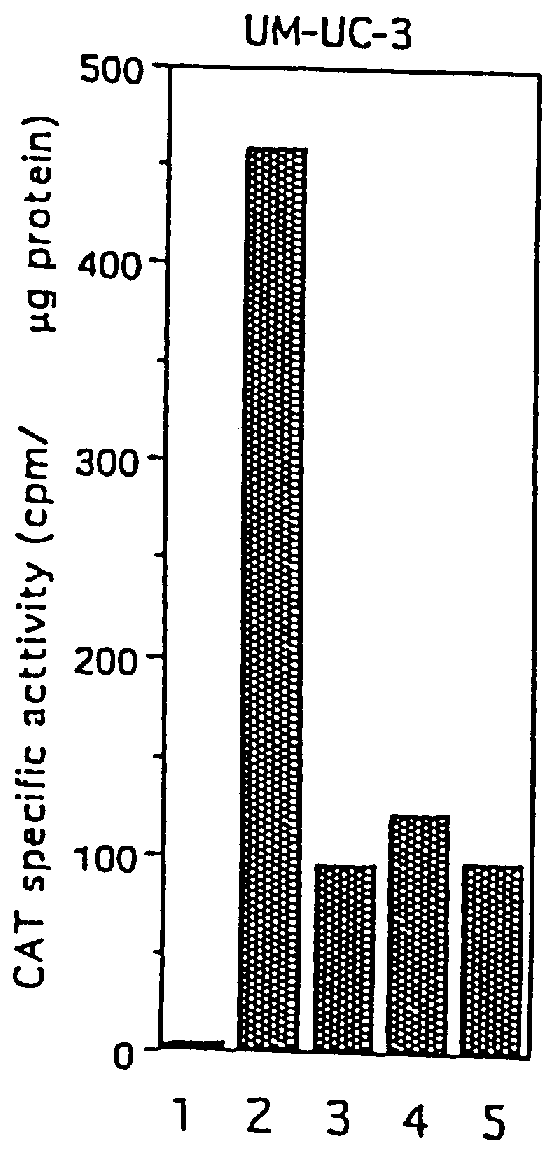Methods and compositions for inducing tumor-specific cytotoxicity
- Summary
- Abstract
- Description
- Claims
- Application Information
AI Technical Summary
Benefits of technology
Problems solved by technology
Method used
Image
Examples
Embodiment Construction
The invention is based, in part, on the discovery that the regulatory regions from genomically imprinted genes that are expressed in cancer cells can be used to target the expression of coding sequences of interest in cancer cells. In particular, it has been found that H19 expression is activated in a wide array of carcinomas, including but not limited to bladder carcinoma, hepatocellular carcinoma, hepatoblastoma, rhabdomyosarcoma, ovarian carcinoma, cervical carcinoma, lung carcinoma, breast carcinoma, squamous cell carcinoma in head and neck, esophageal carcinoma, thyroid carcinoma, astrocytoma, ganglioblastoma and neuroblastoma. Further, it has been discovered that constructs containing the H19 promoter regions operatively linked to a heterologous gene, or the IGF-2 P3 or P4 promoter operatively linked to a heterologous gene, or constructs containing such a promoter in combination with a downstream H19 enhancer, are specifically activated in tumor cells. In another aspect of the...
PUM
| Property | Measurement | Unit |
|---|---|---|
| Cytotoxicity | aaaaa | aaaaa |
Abstract
Description
Claims
Application Information
 Login to View More
Login to View More - R&D
- Intellectual Property
- Life Sciences
- Materials
- Tech Scout
- Unparalleled Data Quality
- Higher Quality Content
- 60% Fewer Hallucinations
Browse by: Latest US Patents, China's latest patents, Technical Efficacy Thesaurus, Application Domain, Technology Topic, Popular Technical Reports.
© 2025 PatSnap. All rights reserved.Legal|Privacy policy|Modern Slavery Act Transparency Statement|Sitemap|About US| Contact US: help@patsnap.com



